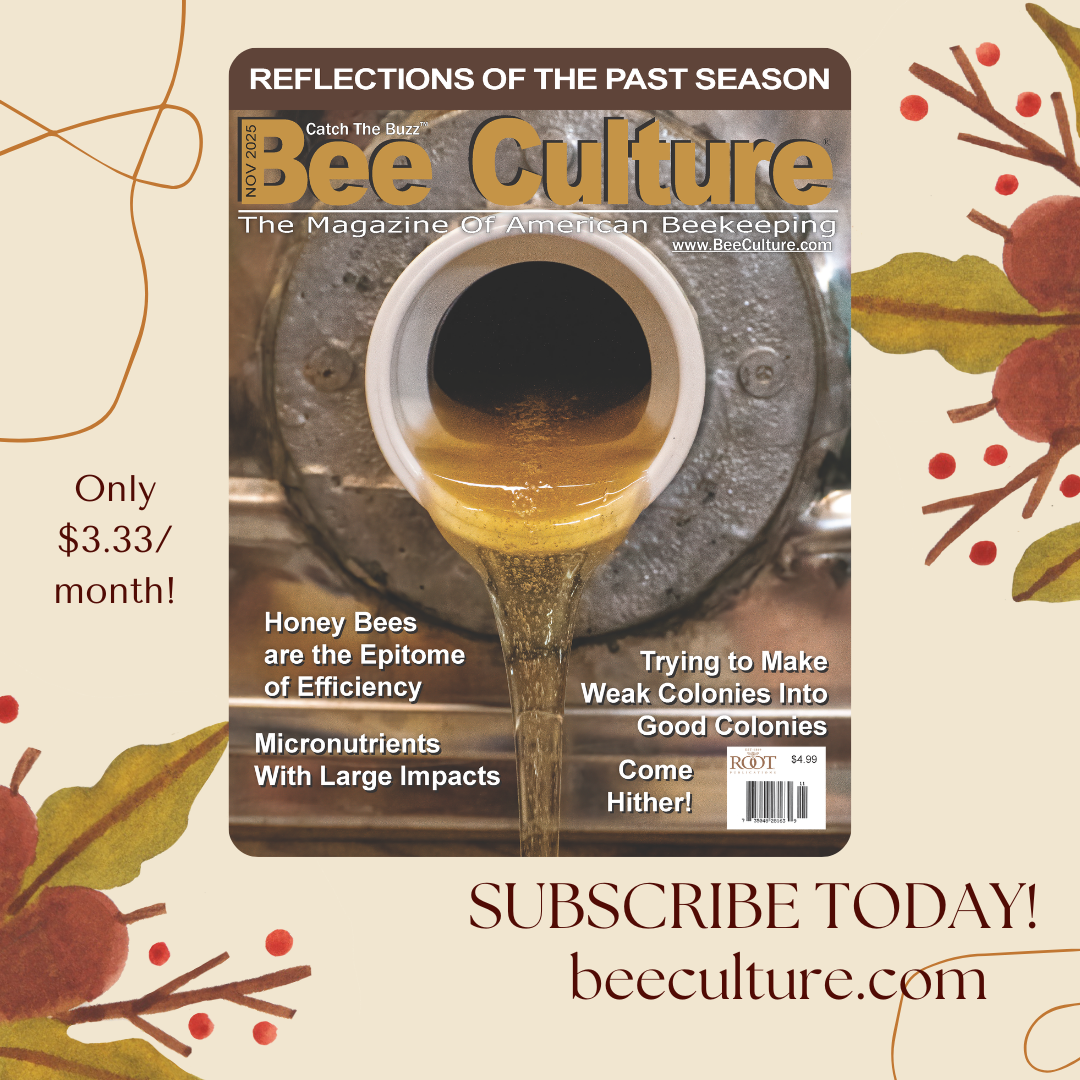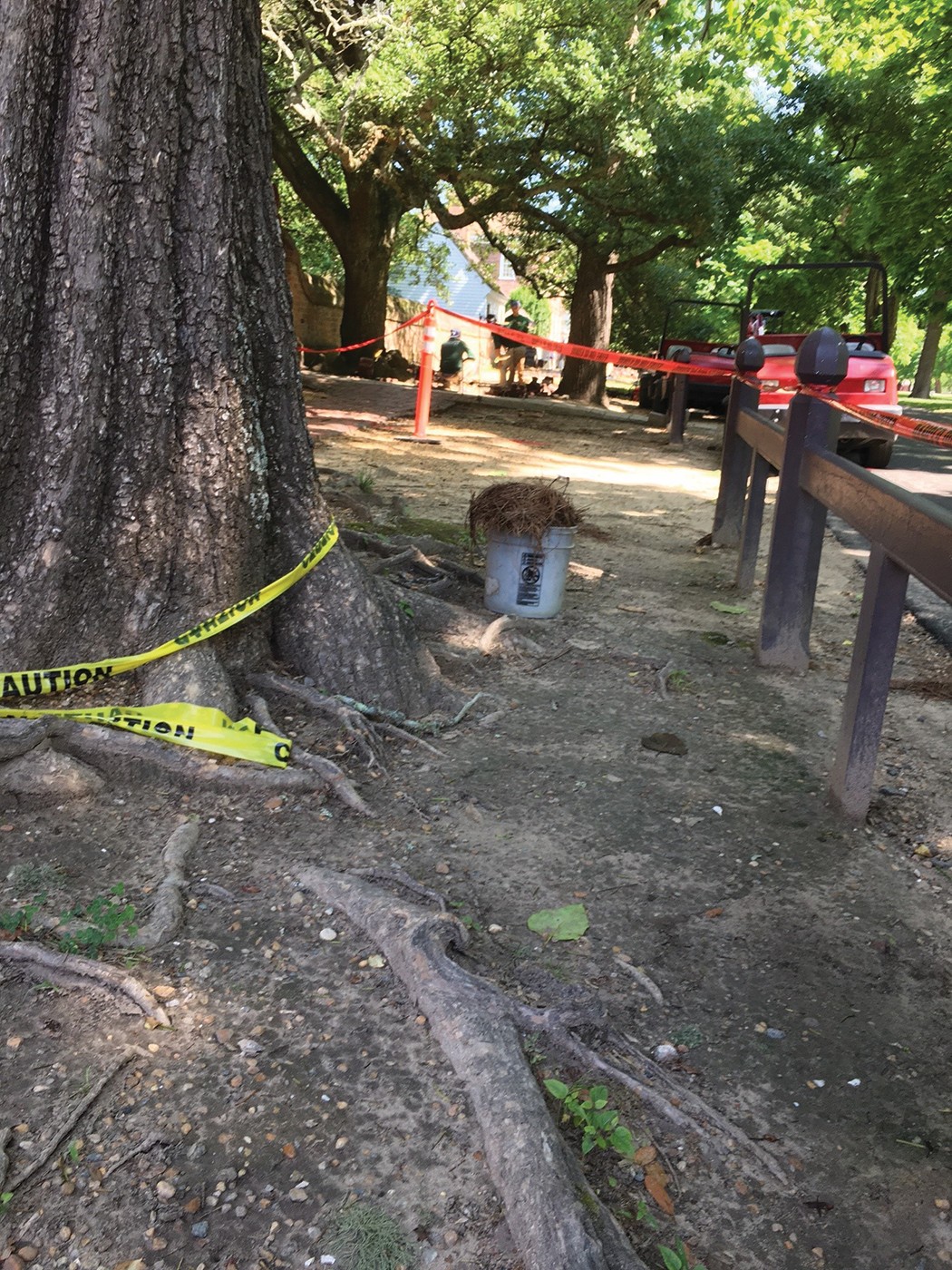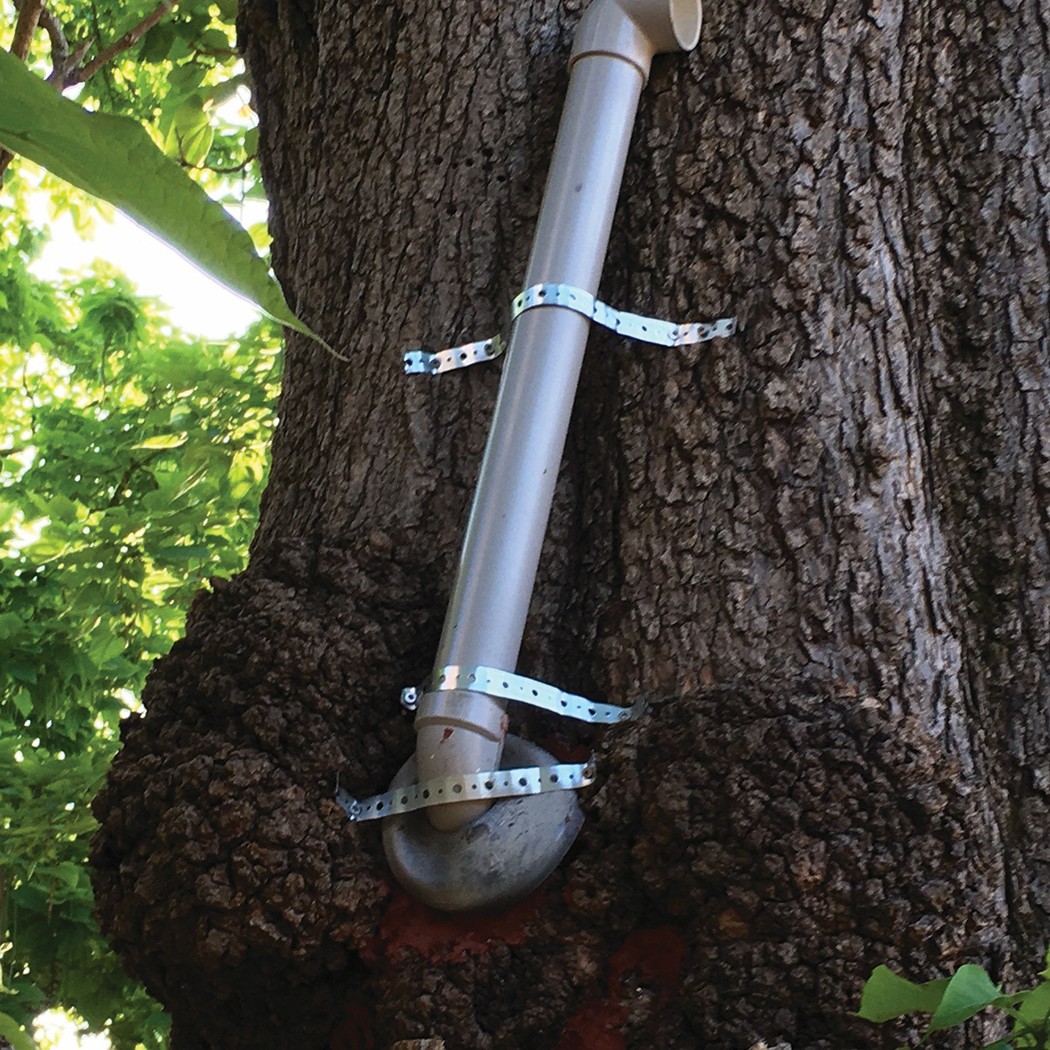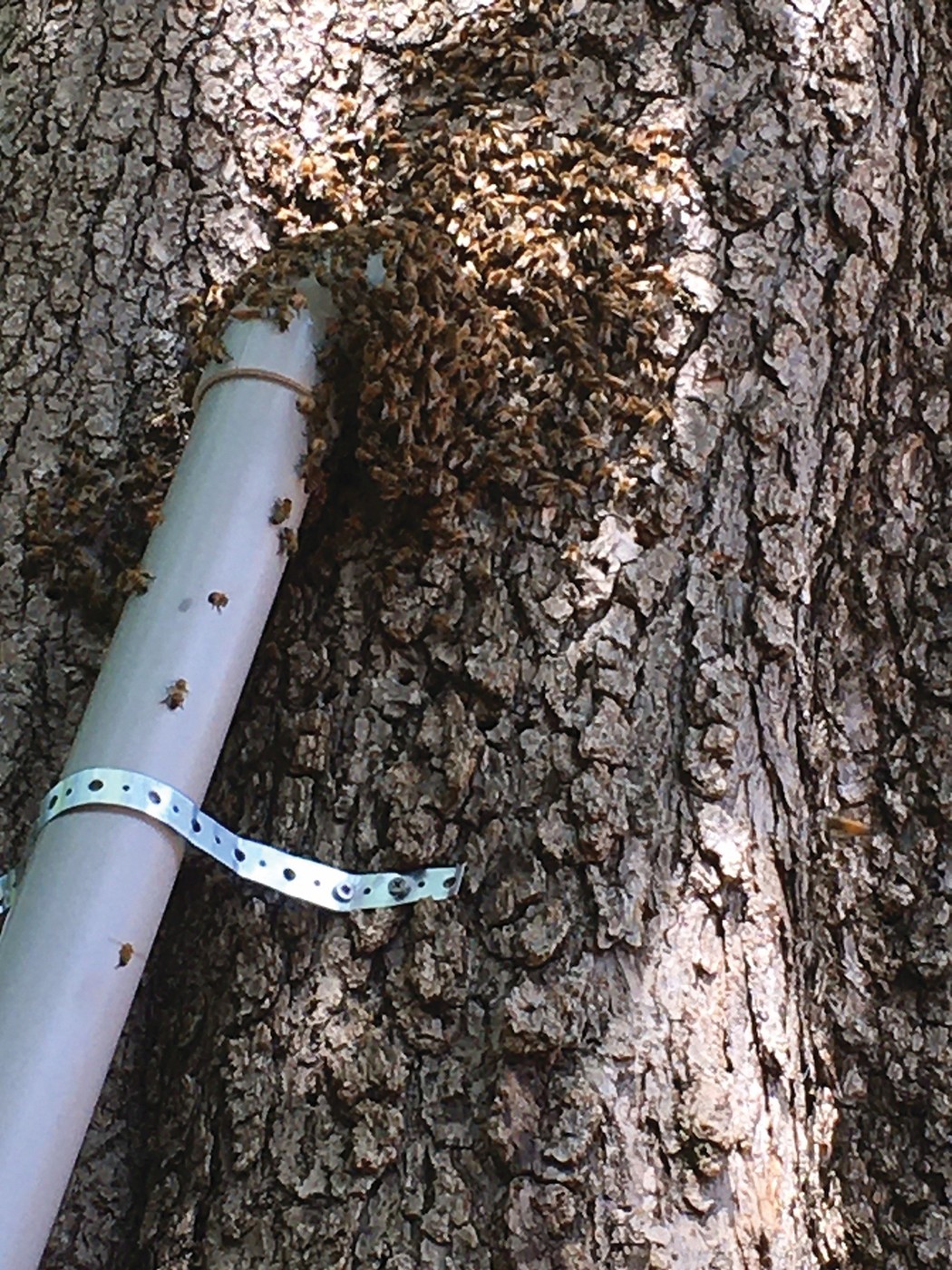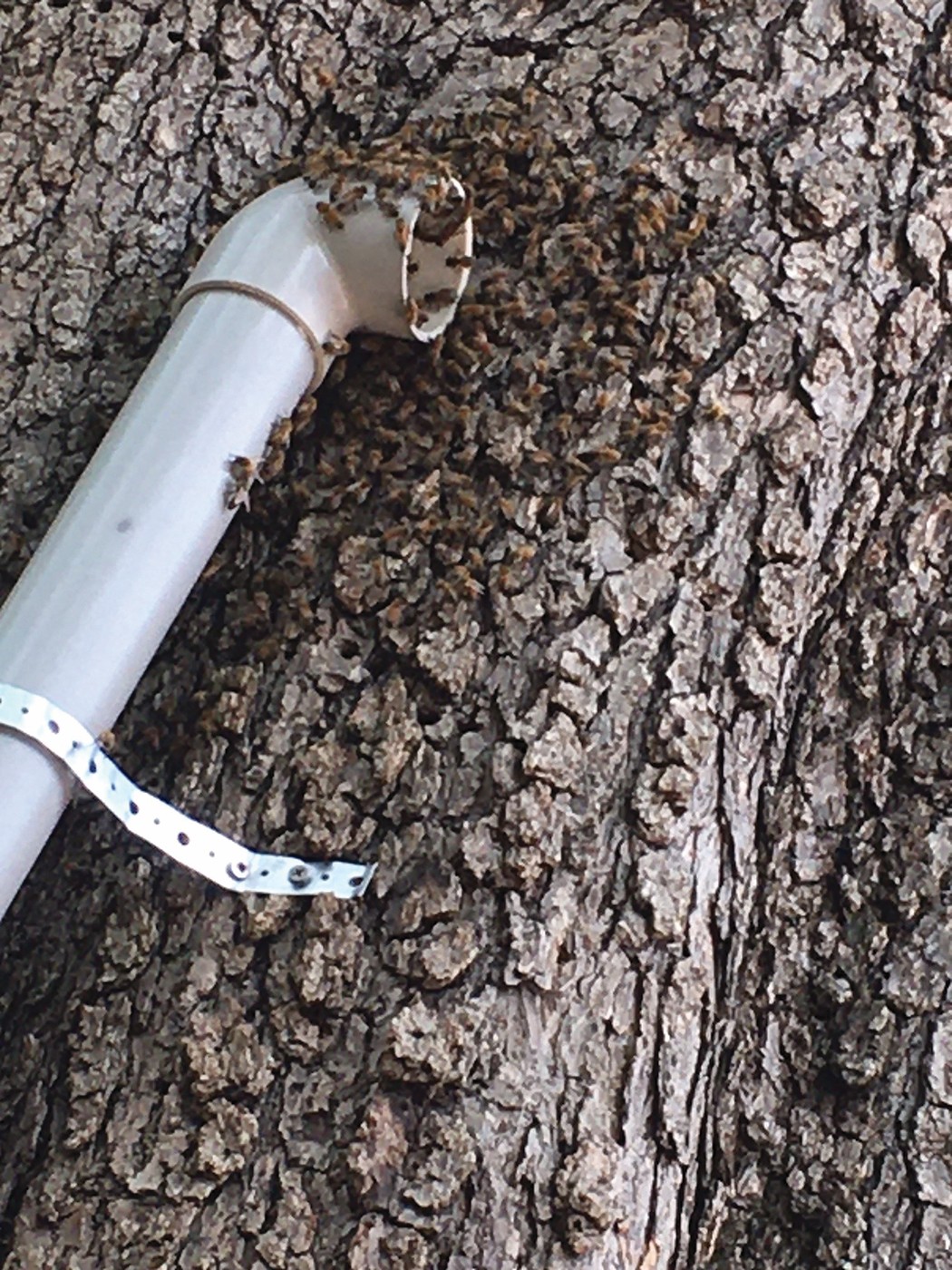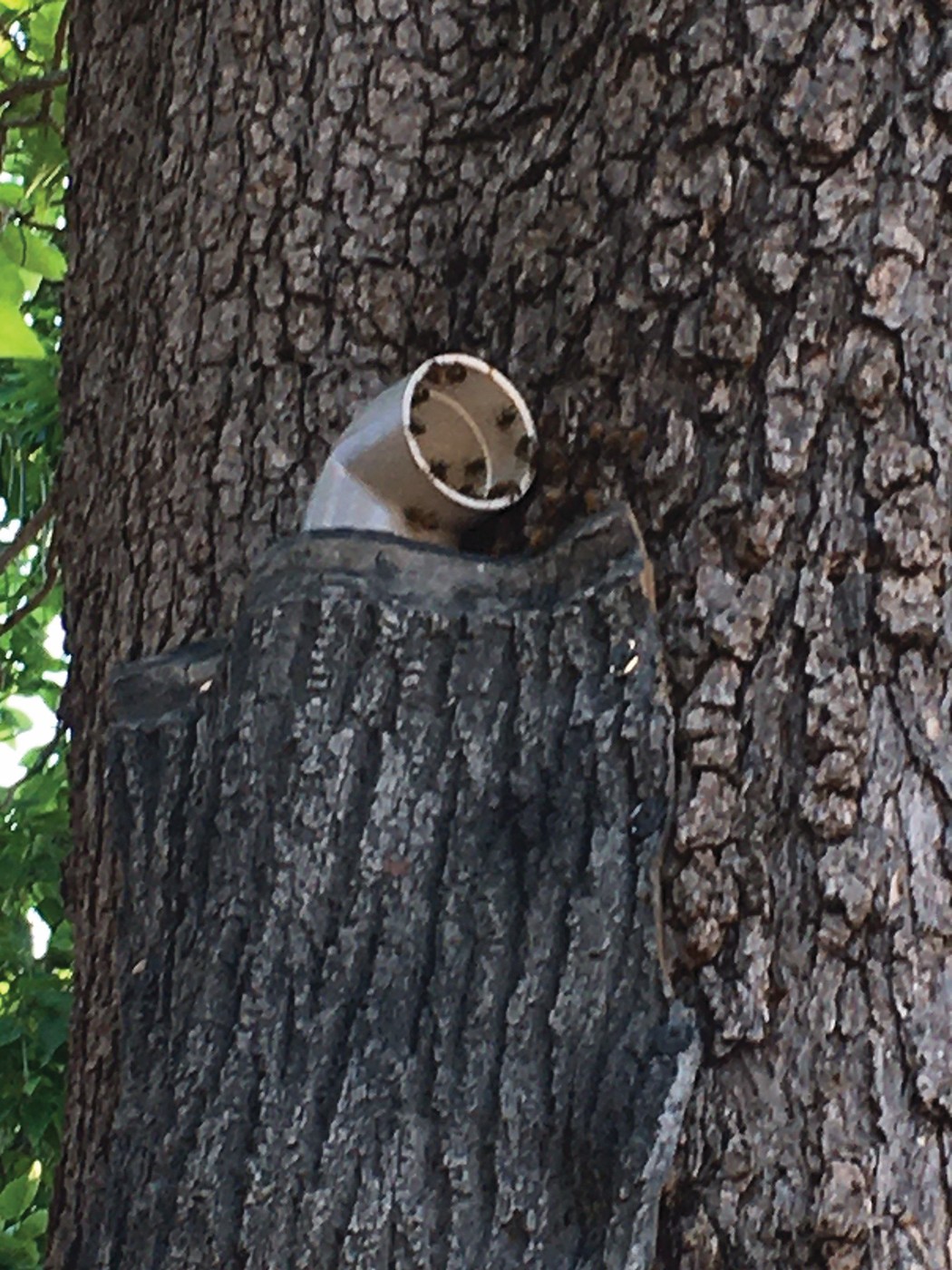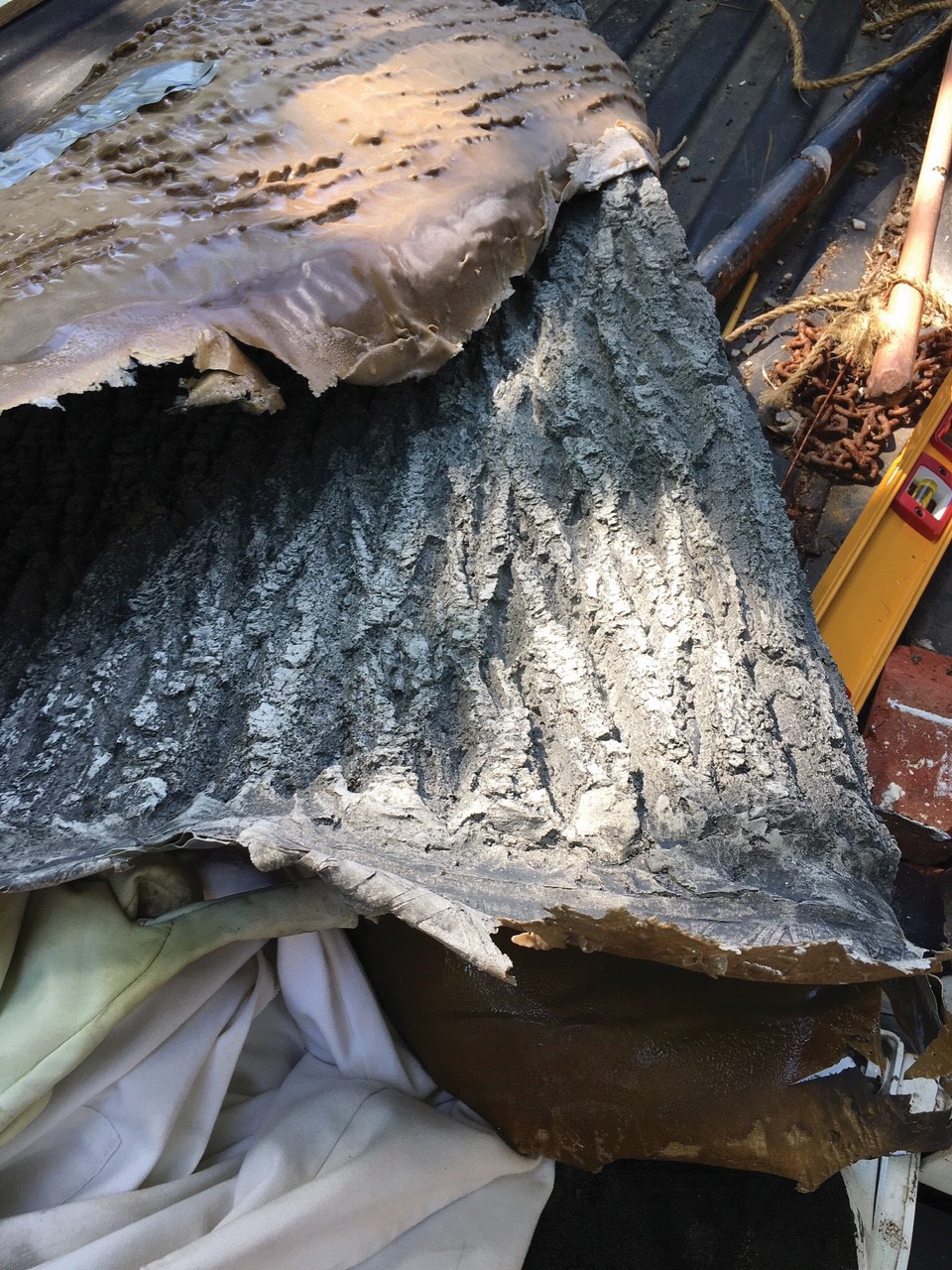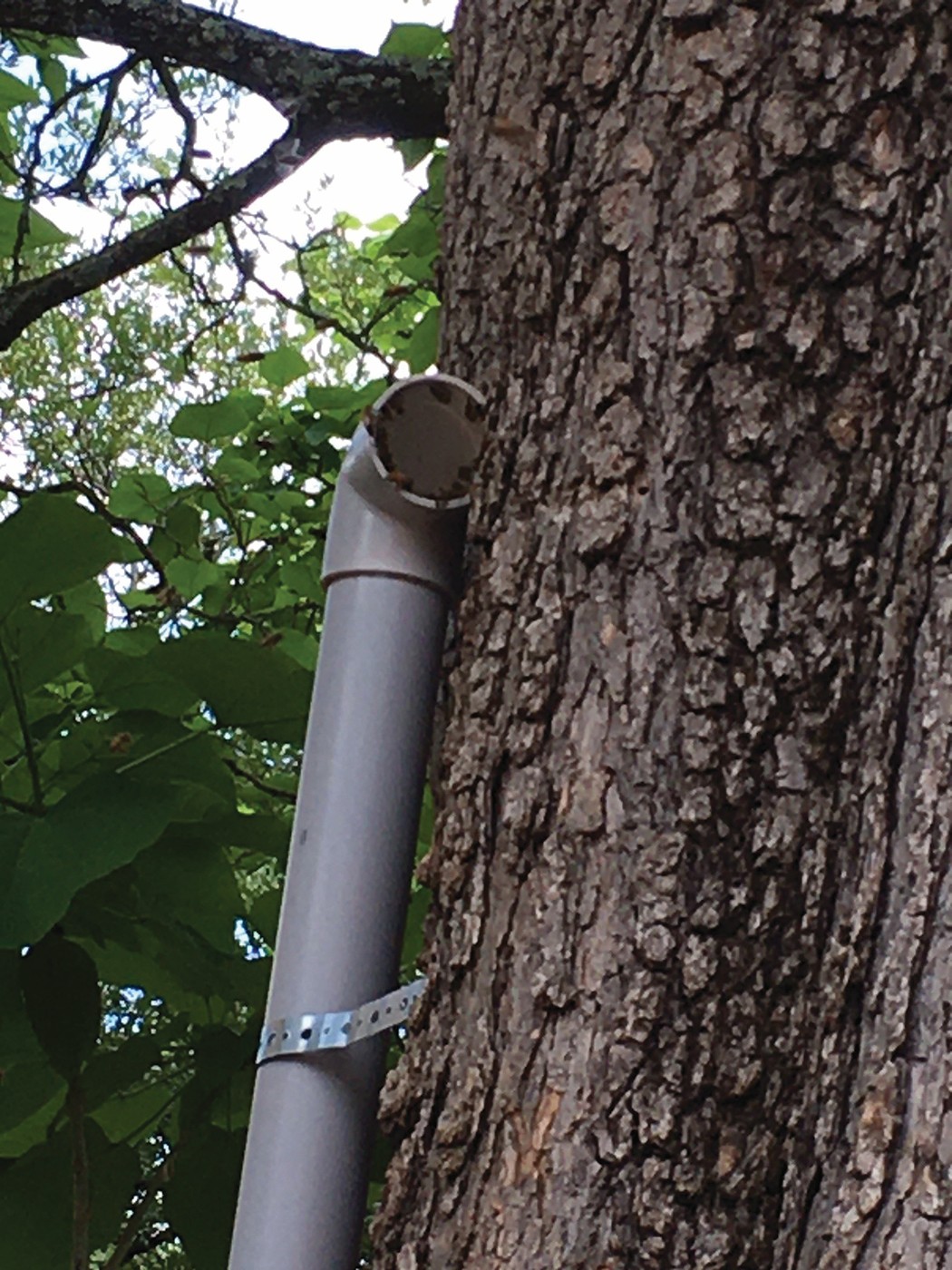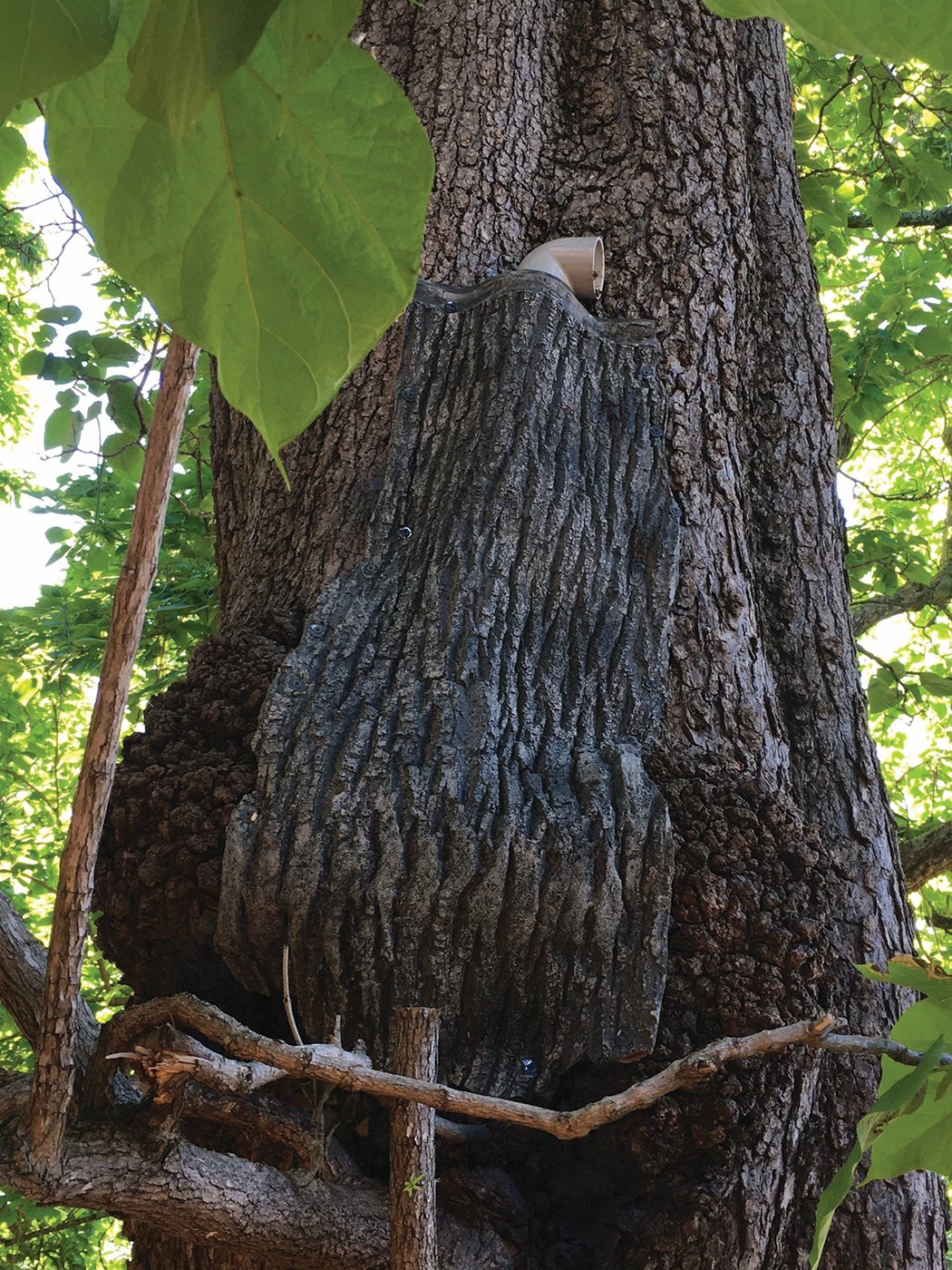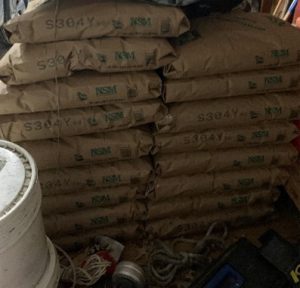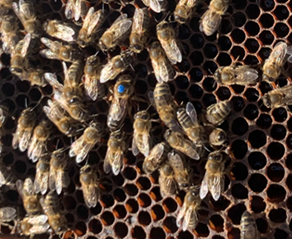Joel Voron
Wild honey bees are usually not a problem here at Colonial Williamsburg. However, one voicemail was about to change that. In June of 2021, I received a voicemail over the weekend saying there was a trail of honey bees hovering at eye level on a busy sidewalk next to a tree. Traditionally, if a swarm happens to land somewhere near a popular tourist location, we cordon it off and the swarm graciously moves along when the “scouts” find a new home. That Monday, I found the closed sidewalk. The hive entrance was seven feet high in a knothole of one of our mature, stately trees. There were indeed a lot of honey bees coming and going and at a level too low for comfort. With the location at the center of town, I knew this was going to be a complex case. I spent the better part of the week calling local beekeepers and meeting with a few to learn that we had a massive hive that had quietly been growing for quite some time.
The recommended solutions from local beekeepers were not ideal for our circumstances. A “trap out” would take weeks. Cutting the tree down to facilitate relocation of the hive seemed too drastic. I wanted a better solution. I wanted something that would be ecologically responsible for the tree AND the honey bees. This issue had been buzzing around my mind for seven days now. Usually, my resolution time with stinging insects is swift, and the whole village has seen this cordon up for a week. The pressure was on to get this resolved quickly as a sidewalk renovation was heading down the street. Also masses of guests would soon fill the area for our annual Fourth of July celebration. I begin thinking the real safety issue is that the entrance hole of the hive is too low and of course pointing in the wrong direction. What if I can manipulate height and direction, has anyone ever attempted such a thing?
Now into the second week of ugly, red, “do not enter” tape strewn around mother nature’s “crime scene” is getting a lot of attention. The vibrations from the sidewalk renovation equipment approaches and the bees do not seem to mind so much. I rule out Africanized Bees; that is one positive glimmer of hope. I come up with the idea of building the bees an escalator of sorts. The material I envision is a PVC pipe chase to raise the elevation of their entrance, with an elbow at the top to point them away from the sidewalk and protect them from rain. I must get this right. Back to calling local beekeepers and asking them if they think the idea would work or endanger the honey bees. I get positive feedback that they think it will!
I begin collecting materials needed: pipe and fittings, some type of flange, screws, and washers. I ordered a hive smoker and researched how and why they work. I decide I will dry fit the PVC as I did not want any PVC cement to off-gas and hurt the bees or disrupt their pheromone communications. It took me a few mornings of being on the scaffolding to fine tune the seal around the flange with low odor caulk. Some of the bees kept going to the old entrance, probably because of pheromones on the tree. After a good rain, more were using the new entrance. After four days the new entrance was a success. I used 3-D rubberized bark to hide the new “bee escalator” and it blended in with the tree beautifully. If you didn’t know it was there, you would never even see it. I look back on this case and realize that as IPM Specialist, we really do go to great lengths to protect our pollinators.




